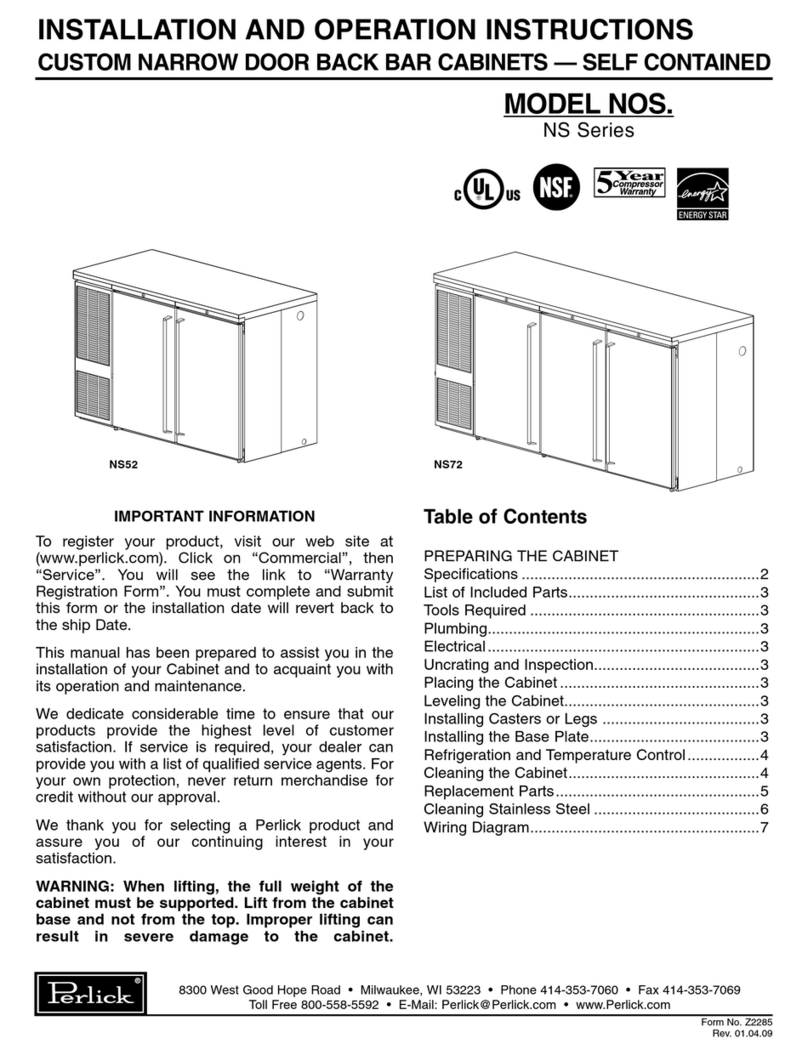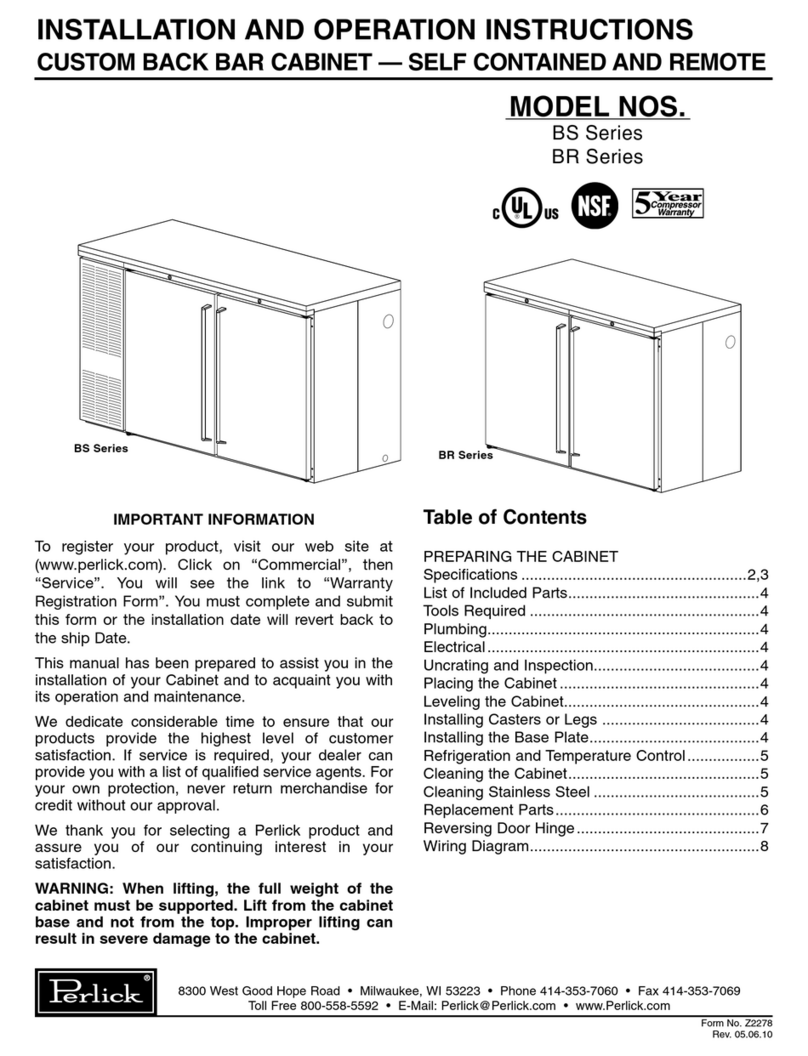
Perlick is committed to continuous improvement. Therefore, we reserve the right to change specications without prior notice
5Form No.Z2278
Rev. 10.04.2010
RECOMMENDED CLEANERS FOR SPECIFIC SITUATIONS
Routine cleaning: Use soap, ammonia or detergent and
water. Sponge the surface with a cloth, then rinse with clear water
and wipe dry.
Smears and ngerprints: Use Signature Cleaning Polish, Arcal 20,
Lac-O-Nu, Lumin Wash, O’Cedar Cream Polish or Stainless Shine.
Rub the surface with a cloth as directed on the package.
Stubborn spots, stains and other light discolorations: Use
Allchem Concentrated Cleaner Samae, Twinkle, Camaeo Copper
Cleaners, Grade FFF Italian Pumice Whiting, Steel Bright, Lumin
Cleaner, Zud, Restoro, Sta-Clean, Highlite Cooper’s Stainless Steel
Cleaner or Revere Stainless Steel Cleaner. Apply with a damp
sponge or cloth. Then rinse with clear water and wipe dry. Or...
You can also use Household cleansers such as Old Dutch,
Lighthouse, Sunbrite, Wyandotte, Bab-O, Gold Dust, Sapolio,
Bon Ami or Comet. For these household cleansers, rub with a
damp cloth. They may contain chlorine bleaches, so rinse
thoroughly after use and wipe dry. Or... You can also use Liquid
NuSteel or Dubois Temp. For these products, rub the surface
with a dry cloth using only a small amount of cleanser. Rinse
with water and dry.
Heat tint or heavy discoloration: Use Penny-Brite, Copper Brite, Paste Nu-Steel, Dubois Temp or Tarnite and rub onto surface with a
dry cloth. Or... You can also use Bar Keepers Friend, Revere Stainless Steel Cleaner, Allen Polish, Steel Bright, Wyandotte, Bab-O or Zud.
For these cleansers, apply with a damp sponge or cloth, rinse thoroughly and wipe dry.
Tenacious deposits, rust discoloration, industrial atomspheric stains: Use Oakite No. 33 Dilac, Texo NY, Flash-Klenz, Caddy
Cleaner, Turco Scale 4368 or Permag 57. Swab and soak with a clean cloth. Let stand for 15 minutes or more according to directions on
package. Then rinse and wipe dry.
Rust discoloration or corrosion caused by cleaning agents containing hydrochloric (muriatic) acid or chlorine bleach: Use
3M Scotch Bright Pad, type A Grade “Fine”. Clean o the surface soil using cleaning methods above. Then rub discolored or corroded
areas lightly with dry pad.
Note: Use of proprietary names is intended to indicate a type of cleaner and does not constitute an endorsement. Omission of any proprietary
cleaner does not imply its inadequacy. All products should be used in strict accordance with instructions on the package.
Source: Packer Engineering, Naperville, IL (independent testing laboratory).
Use non-chlorinated cleaners with a soft cloth and RINSE, RINSE, RINSE to
maintain the natural qualities of your stainless steel equipment!
REMEMBER...




























